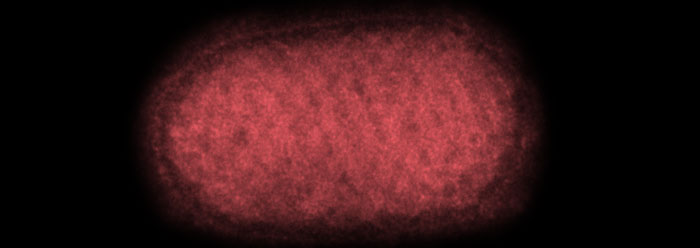One newly discovered genetic manipulation program helps the poxvirus rapidly invade various kinds of cells. How would such a program arise?
Different poxviruses causes chickenpox and cowpox. Most viruses are species-specific, but these infect different creatures by adjusting their virus-cell interface faster than the creature's defenses can adjust to detect and counteract the viruses.
Many interpret the poxvirus' adjusting process through Darwinian natural selection, where the host body cells somehow select those viruses that succeed in multiplying and leave the unsuccessful viruses to die. But is this really what happens? What if the body cells are not selectors, either literally or figuratively?
If it is not the environment, then what else could actually be selecting virus trait variations? Newly described poxvirus genetic mechanisms clearly show that the poxvirus generates genetic options to provide a variation that can pick the figurative locks that open the doors to different creature's body cells. Researchers described in the journal Cell just such a mechanism in poxvirus—calling it a "gene accordion."3
A preview article in the journal Cell described it as "a powerful selective device that is likely to be a broadly applicable evolutionary mechanism." Of course, that statement becomes more biologically clear simply by removing the word "evolution."4
The gene accordion is a remarkable mechanism in which the virus generates extra copies of a gene called K3L, which codes for a protein that inhibits the action of a host immune defense protein called PKR. The PKR protein counteracts virus proteins, so having more gene copies of viral K3L can inhibit more PKR. The researchers found that after the challenge of the host's PKR was adequately resolved, the poxvirus decreases its number of K3L gene copies—hence the name "accordion."
Also, the study authors found that during the accordion process, single DNA bases in the K3L gene changed, making its virus more pathogenic.
A rough illustration of this whole scenario is a locksmith generating a key to open a locked door. First, he makes extra copies of key blanks. Then, he etches slightly different profiles on the keys until a key successfully opens the lock. Lastly, he discards the unnecessary keys.5 Nowhere along the way are random processes invoked.
In fact, the gene accordion researchers claimed that the actual mechanism that causes all of this to take place is yet unknown—indicating complexity of design. Nobody would suggest that the lock selected the correct key. Locks are not intelligent; but locksmiths are.
Like any machine or program, the gene accordion is strikingly positive evidence for design. In addition, as a biochemical mechanism that enables viruses to pioneer new host cells, it takes credit away from natural selection and gives it back to the Creator who built this "powerful selective device."3
References
- God may have designed viruses to do naturally something similar to that which bioengineers do artificially with gene therapy. Viral particles can deliver cellular software updates by installing newer, different, or more complete versions of a gene into a cell's DNA content. See: Thomas, B. Were Viruses Created or Evolved? Creation Science Update. Posted on icr.org September 2 2011, accessed September 26, 2012.
- Thomas, B. Virus Motors Impossible for Evolution. Creation Science Update. Posted on icr.org January 9, 2009, accessed September 26, 2012.
- Elde, N. C. et al. Poxviruses Deploy Genomic Accordions to Adapt Rapidly against Host Antiviral Defenses. Cell. 150 (4): 831-841.
- Roth, J. R., and D. I. Andersson. 2012. Poxvirus Use a "Gene Accordion" to Tune Out Host Defenses. Cell. 150 (4): 671-672.
- In this imperfect analogy, the lock is the PKR protein, the keys are the viral K3L's gene product, the slightly different profiles are the single base alterations to the K3L gene, and the key copying, altering, and discarding process is the poxvirus gene accordion.
Image credit: CDC
* Mr. Thomas is Science Writer at the Institute for Creation Research.
 Virus
Adapts with Gene Accordion by Brian Thomas, M.S. *
Virus
Adapts with Gene Accordion by Brian Thomas, M.S. *